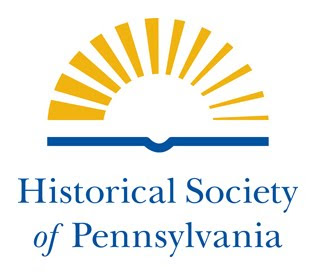By Celia Caust-Ellenbogen
What do you want for Christmas this year? Imagine if the president of your company agreed to pay off all of your debts–mortgages, hospital bills, everything–or give you $1,500 cash if you had none. Imagine if he didn’t just do it for you, but agreed to pay the debts of everyone working at the company? Wouldn’t that be a wonderful Christmas?
That is exactly what happened in Ambler, Pennsylvania in 1936. It cost James Gravell, president of the American Chemical Paint Company, about $100,000–that would be over $1.5 million today. President Franklin D. Roosevelt personally met with Gravell, and thanked him for the “generous remembrance of your employees at the holiday season.” Gravell wrote a pamphlet about ‘The Cause and Cure of Depressions,” and addressed the U.S. Congress on the topic. His generosity extended beyond the one-time gesture–he also implemented a profit-sharing plan to continue spreading benefits to his employees.

James Harvey Gravell was an engineer, innovator, and philanthropist born in Philadelphia in 1880. While employed by Hale-Kilburn Metal Company, Gravell helped develop a chemical treatment for preventing rust and peeling on painted metal. He purchased the patent for the “Deoxidine,” and started his own company, the American Chemical Paint Company, in 1914. After operating in a rented space in Philadelphia, Gravell opened a chemical manufacturing and research facility in Ambler. The company was extremely successful, and Gravell became a rich man. He donated money to a number of worthy causes, including giving his employees the best Christmas ever.
 After Gravell died in 1939, the company went through some restructuring, including a name-change to AmChem Products, Inc. It was acquired by Henkel in 1980, a company which continues to operate today. In 2011, a group of former AmChem employees donated a large collection of AmChem records to the Wissahickon Valley Historical Society, where you can go to learn more about the company’s history. The collection includes photograph albums, subject files, a box of patents, and some financial records. There is even an income/expense ledger from 1934-1938, a period that includes the infamous 1936 Christmas gift.
After Gravell died in 1939, the company went through some restructuring, including a name-change to AmChem Products, Inc. It was acquired by Henkel in 1980, a company which continues to operate today. In 2011, a group of former AmChem employees donated a large collection of AmChem records to the Wissahickon Valley Historical Society, where you can go to learn more about the company’s history. The collection includes photograph albums, subject files, a box of patents, and some financial records. There is even an income/expense ledger from 1934-1938, a period that includes the infamous 1936 Christmas gift.
Industrial history doesn’t happen to be my specialty, but if it was, I would spend some time in Ambler. If you read the last blog post, you already know that Ambler used to hold the dubious honor of being the asbestos capital of the world, thanks to local asbestos manufacturer Keasbey & Mattison. K&M spurred the economic and civic development of the borough at the end of the 19th century, even if its disastrous effects on community health weren’t understood until the end of the 20th. We first learned about K&M at the Historical Society of Fort Washington, but the Wissahickon Valley Historical Society also has some ephemera and documents relating to that company. The two historical societies are very near to each other, so my recommendation would be to swing by both repositories and learn the fascinating stories of Keasbey & Mattison and the American Chemical Paint Company in one fell swoop.
Incidentally, in the midst of national asbestos investigations, the American Chemical Paint Company has also come under fire for exposing its employees to asbestos. But we won’t talk about sad things like that right now. It’s almost Christmas!
The Wissahickon Valley Historical Society has a website at http://www.wvalleyhs.org/. You can also call (215) 646-6541 or email info@wvalleyhs.org for more information.
The Historical Society of Pennsylvania just rolled out their spiffy, redesigned website, and they’ve given our blog its own page! Please follow our “Archival Adventures in Small Repositories” at http://hsp.org/blogs/archival-adventures-in-small-repositories.

